It is a weird time of year to be a mountain biker. Depending on where you live, you could either be trying to get up the determination to brave the chill and ride, or putting away your bike and waxing up the downhill skis.
Here in the southeast, most of us tend to mountain bike year round since the cold weather isn’t that severe and we don’t get enough snow to ski on. I say “most of us” because the cold inevitably scares a number of riders off of their bikes and into the gym or onto the trainer. However, after growing up in central Wisconsin and living in Montana, I have learned that you can enjoyexercisingoutdoors in just about any conditions.
The trick is to dress for the weather.
Long-Sleeve Jersey

An insulated long-sleeve jersey is the first logical defense against the deepening chill of winter. My go-to jersey from Pearl Izumi isn’t very thick at all, but it does an excellent job of trapping my body heat. After I’ve been exerting myself on the bike for a couple of minutes and my body heats up, the insulated jersey captures that heat and holds it close, warding off the cold.. By having a jersey specially designed to do this, I can stay warm without the bulk of a big jacket.
Riding Tights
Personally, I’ll just ride with shorts until it gets down into the low 40s. But once the mercury drops to 39 degrees and below, it’s time for me to break out the tights. When I first started cold-weather riding, I would simply wear long underwear and other loose layers over my chamois (and under my outer shorts so I wouldn’t look like too much of a dweeb).

I didn’t understand the benefits of a set of cycling-specific thermal tights until I bought a pair at an REI scratch and dent sale. Cycling-specific cold-weather tights are designed to do the same thing as the thermal jersey I mentioned above: trap your body heat and keep you warm without excess bulk.
Honestly, they do an amazing job! To date, I have yet to go on a ride where my one pair of tights does not feel adequate. I have ridden with simply that one pair of tights in temperatures nearing the teens, and still that one layer has done an amazing job of conserving my own body heat that I have been comfortable throughout my whole ride. Sure, at that temperature you’ll feel the chill when you start out, but once you are generating some heat by pushing those cranks, you’ll feel toasty and be tearing it up on rock-solid singletrack.

The extremities are the hardest part of the body to keep warm when mountain biking. Add in the fact that you’re gripping the handlebars and need your thumbs to shift and your fingers to brake, and keeping your fingers toasty but not sweaty all while maintaining functionality can become an art form.
Many different factors come into play: air temperature, wind speed (how fast you’re riding), and moisture.Realistically, you may need several different pairs of gloves for different temperature ranges. I recently picked up the Fox gloves pictured above and they’re great for weather in about the 35ish-60ish degree range, due to the vents on the back. When temperatures dip below 30, I’ll go with a significantly heavier glove. Many bike companies make gloves for lower temperature ranges, but I find that some ski gloves work just as well.
Wool Socks
As I mentioned above, the extremities are the hardest part of the body to keep warm. Swap out your cycling socks for a heavier-weight wool sock. They may be a little bulkier, but a little discomfort is way better than frost bite!
Shoe Covers

One piece of essential gear that I have largely ignored until recently (much to the detriment of my frozen toes) are shoe covers.
The average mountain bike shoe is designed with large vents to channel air into the shoe to keep your feet from sweating excessively during the hot summer months and to drain water after deep creek crossings. But these features work against you once the weather turns cold.
While you may look funny wearing them, plastic covers solve the problem of shoes designed for the desert by keeping the cold air and snowy/slushy muck out and your body heat in.
Large Hydration Pack

While you might not need to carry as much water during the winter as you do during the blazing hot days of the summer, I always carry a large-capacity Camelback that features a large storage compartment. Since the weather outside and your internal temperature can fluctuate so much over the course of a ride, I find that a large pack is convenient for carrying extra layers in case I need them, or storing layers that I’ve chosen to take off.
Cycing Beanie: For When it Gets Really Cold
When the temperatures start getting seriously cold and your ears start freezing solid, try on a cycling-specific beanie to keep your noggin warm. The greatest loss of body heat occurs through your head (and specifically your ears), so buying a beanie will help you in extra-cold conditions. Personally, I don’t usually feel a need to put a hat on while riding until the temps are at least into the 20’s. Trek7k wrote an article about cold weather cycling clothes about 2 years ago, and he talked specifically about cycling beanies. There’s more great info there, so be sure to check it out!
If you live at a higher latitude and have to deal with subzero temperatures and significant amounts of snow, these same principles still apply. Just add thicker and more numerous layers!
Hopefully these clothing tips will help prepare you for a fun winter season filled with frozen singletrack instead of several mundane months spent on the trainer. Get out there and rip it up!
Your Turn: Do you have any cold weather mountain biking tips to share? If so, please add them in the comments section below!



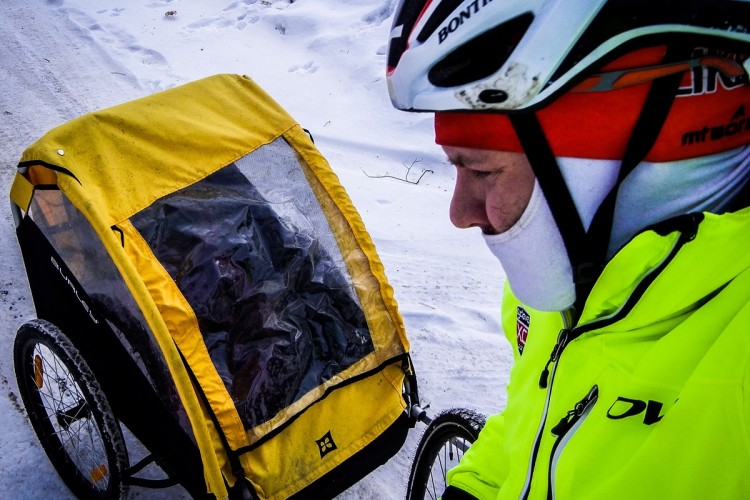

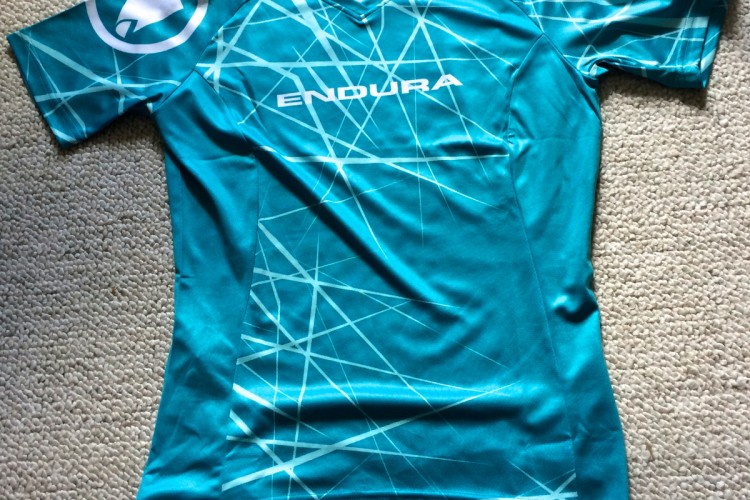
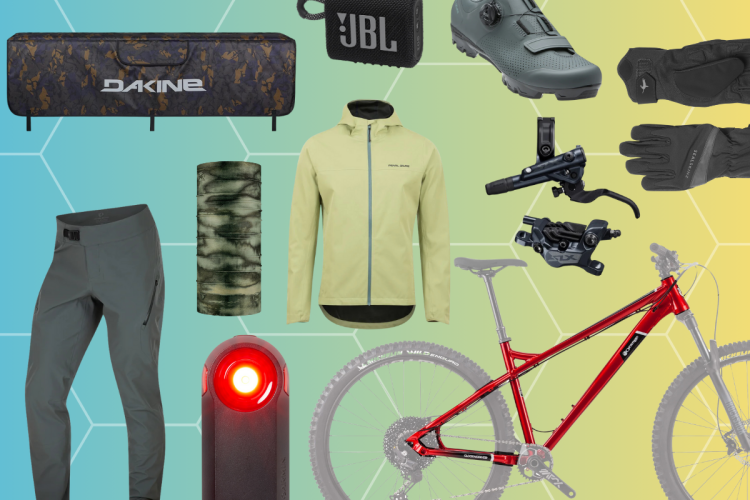

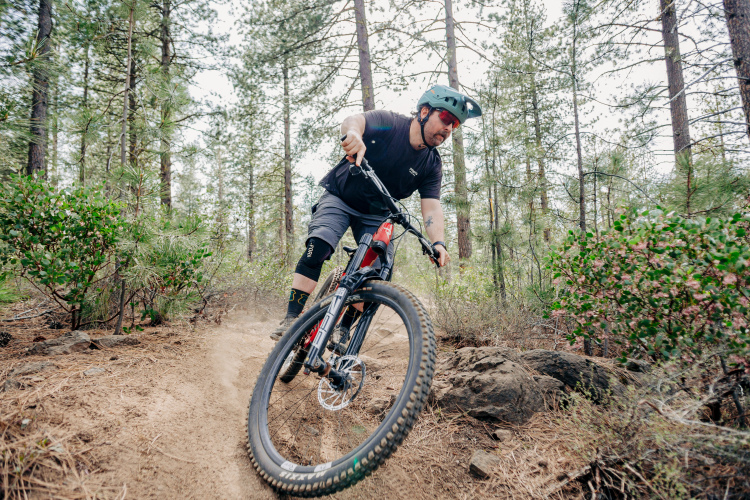
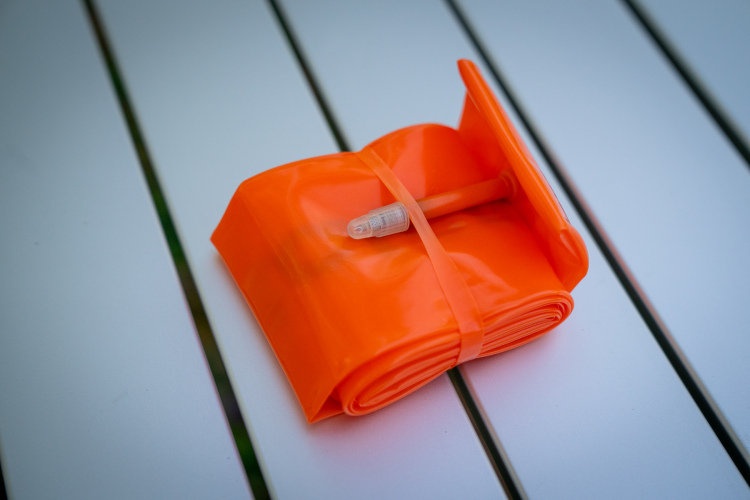

20 Comments
Jan 26, 2011
@dgaddis, Way to be hardcore!
@maddslacker, haha sweet
Jan 26, 2011
Jan 26, 2011
As for easily adjustable layers, sometimes (depending on the temperature), I've personally found that just unzipping my outer layer halfway or all of the way regulates my core temp enough to stay comfortable. Anyone else found that to be the case?
Jan 26, 2011
Mine happen to have the rubber fingertips that make them ok for braking.
Please don't judge your winter gear by my choices though. I'm from Maine, so when my friend from Texas sees me put on a windbreaker, he gets out a parka. :D
Oct 11, 2013
I also use the largest pack I have but for different reasons. Up here in New England your hydration pack will freeze very fast between the cold air and the cold wind passing over your pack as you ride and this hold especially true for the feed hose. Nothing sucks more than carrying a frozen block of ice on your back and having no hydration!
The reason I use the largest pack aside from storage is the more water I carry the longer it takes to freeze. In order to keep the pack from freezing I have an over sized LL Bean weather resistant vest made from very similar materials as riding tights which I wear over top of the pack. This allows my body heat that I am trapping inside the few thin layers I am wearing to keep the pack from freezing. The side effect of doing this also makes for warmer water instead of ice cold water that will chill right thru you on a nice cold day.
I would also like to point out the often overlooked shoe covers. Many riders dismiss them, but the faster you ride the colder your feet get, The most valued equipment in winter riding IMO is that wind layer. Without the wind layer the faster you ride the colder you get, especially on long rides where you work up a sweat and the wind passes over your sweat soaked gear!
Jan 26, 2011
Shoe covers are really good bang for the buck as long as you don't do much walking in them. I used a set last year and they worked great...but the rocky hike-a-bikes at 3 Snake Creek Gap races tore them to pieces. I got a set of winter shoes this year and they are the bomb. More expensive than covers for sure, but they should last for many seasons. I'll post a review soon.
Jan 26, 2011
Jan 26, 2011
I'm a big fan of wool jerseys and thermal base layers for super cold days. I've also doubled up my gloves on a couple rides this year when it as really cold.
My Camelbak has an insulated sleeve around the hose and I always thought it was sorta lame (was it to keep my water cold on hot days?). Then I rode a couple nights last month with another (un-insulated) pack and discovered the real reason: water freezes inside the hose and you can't drink it!
That full face helmet in your photo above looks pretty toasty - I know I roast in those things during the summer. I've seen some guys ride with ski/face masks but that usually seems like overkill to me.
Jan 27, 2011
I also have a few options for gloves for the in between temperatures. I have winter gloves (new for this season) for the really cold rides and I also keep a pair of glove liners that can easily convert your normal full finger gloves into a cold weather glove. The liners are inexpensive and an easy fix as long as the temps don't plunge too low.
I tend to add a new piece or two each season, yet it is mostly from the previous off season clearance sales...I don't get to use them for a year, but a nice surprise when the next cold season hits!!
Oh yeah...a beard is a great face insulator for sure.
Nov 3, 2011
Jan 26, 2011
I'm all over the wool socks though, even for summer. In fact, I'm slowly phasing out my synthetic socks for wool as they get worn out.
Although I'm not quite ready to ride in the cold this year... next season will be another story as I have big plans for winter of 2011/2012. I'll definitely be investing in a pair of riding tights soon though.
Jan 27, 2011
Also, bring an extra pair of socks and shoes for changing after you ride!
About the full face helmet Goo, I wear an UnderArmour Ski mask balaclava thingy. Santa brought me it. Super adjustable for full head and face, just head, just face, or anything in between.
Jan 26, 2011
DGaddis is a bit of a freak, or I am. I was on that ride he describes. I was cold at times and had on a long sleeve Under Armor base layer, a long sleeve thin merino wool jersey, and a vest. I had on my warmest tights - lined inside and a wind stopper front. I couldn't believe he had on only a jersey and arm warmers on the top.
I also like a thin polypro base layer. I have been getting some Under Armor stuff for Xmas and I finally tried it and it works great. I am not sure how much it cost compared to the thin polypro thing from Campmor.
Goretex socks too.
Jan 27, 2011
very helpful stuff.
Nov 30, 2014
I am also a fan of the long sleeve jersey or long-sleeve base layer with arm warmers for cold temps. If you warm up too much you can always shed the arm warmers later in the ride.
I will also double up with a pair of thin cycling socks under some wool socks. The double layers also help stave off the cold longer. Might not be needed with a full-foot shoe cover as shown in the article, but I've always just used toe covers over my shoes. Might need to try out some booties.
Nov 30, 2014
Dec 1, 2014
Jan 26, 2011
Nov 3, 2011
I want to get some wool jerseys or baselayers heck I would settle for a long sleeve jersey.
Keep on riding.
Jan 27, 2011